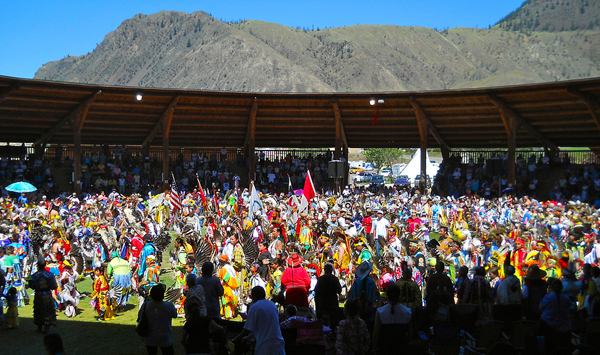#PowwowWednesday: The Grass Dance
/This week #PowwowWednesday takes a look at the Grass Dance. Largely considered intertribal, the Grass Dance is one of the most competitive forms of dancing found at powwows today. But like many other dances, it has disputed origins.
Legend has it, from the Northern Plains, that a young man born without the full use of his legs longed to run, dance and play like the other children. He sought a Medicine Man for help and was advised to seek a vision on the prairie. There, the young man saw himself dancing like the long swaying grass. Upon returning to the village, his mother made an outfit with prairie grass and his father created a dance from his son's description. A celebration was held to share this with the village, during which time, the young man's legs were healed.
From crazycrow.com:
Yet another story tells of the grass dance coming from the movements of the early scouts seeking a site. The grass being high in new areas, the scouts would dance in a special way to flatten the grass and make it acceptable for a new camp or meeting site.
In another version of the origin of the Grass Dance is that the grass dancers were called out to the place where feasts and special events were to take place. The dancers blessed the ground while they danced in time with the beat of the drum. While the grass dancers danced, they flattened the grass with their feet in preparation for the ceremonies to take place.
Many believe that the Omaha tribe originated the dance in their warrior societies. The grass dance movements reflecting warrior movements such as stalking the game or enemy and fighting the enemy (including one movement representing one of the warrior's legs being staked and unable to move and battling with this leg in a held position).
It is widely practiced as a mens dance, but it has not always been - women have danced it on occasion. In the height of women's rights in the 1970s, women participated wearing men's regalia and reportedly 19th-century photographs document women grass dancing. Today, women will still perform it during switch dance.
From Indian Country Today, Origins of the Grass Dance:
Like other dances, balance and symmetry are essential. What the body does on one side, it must do on the other. The movements evoke the grass-trampling theory of the dance’s origins, as dancers seem to be stamping down grasses. Its evolution has led to a broader repertoire of moves: The kicks are a shade higher now, the spins a hint faster, and dancers are likelier to travel around the arena than they were even 15 years ago. Yet the dance remains unmistakably true to its roots: While Charging Eagle consistently honors his ancestors and tribe by sticking to the roots of grass dance, he also acknowledges that adding one’s own essence helps keep the dance alive. “I try to outdo myself, not the other dancers,” he says. “Grass dance is about movement, footwork, and style—the beat is medium so there are so many things you can do with your body.”
Watch some Grass Dance moves from the finals at this past weekend's Kamloopa Powwow:
Speaking of Kamloopa, this photo captures the incredible setting and beautiful weather they had:
Check out the whole Kamloopa 2011 photoset from Dwaye Rourke here.



